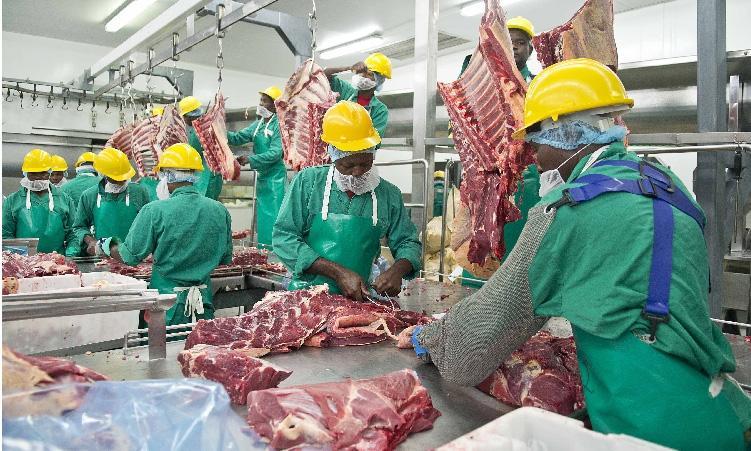Africa-Press – Namibia. The Meat Corporation of Namibia (Meatco) recorded a reduced net loss of N$67 million for the year ended 31 January 2024.
This is close to a 50% decrease in loss when compared to N$118 million recorded in the previous financial year. According to the annual report, the company experienced production problems with substandard plastic vacuumed bags that affected the quality of meat and, therefore, led Meatco to sell products at a non-profitable rate.
This led to a revenue loss of about N$50 million. “The situation was addressed and rectified, but it affected our bottom-line to the tune of nearly N$50 million,” reads the report. Additionally, the company says access to finance has remained a challenge.
“Meatco is a highly capital-intensive business. Slaughtering 5 000 head of cattle in a month means we have to have access to N$70 million the next month to pay producers. You either need to have reserves, or a backing facility at the banks and that has been our challenge during the reporting year,” notes the report.
Revenue for the company reached N$1.2 billion, an increase from N$765 million from the previous year. Of this amount N$142.3 million came from government coffers. Meatco paid N$964 million (N$560 million in 2022/23) to producers and slaughtered 60 820 head of cattle.
To break even for the 2022/23 financial year, Meatco needed to slaughter around 60 000 head of cattle but was unable to meet that target, slaughtering only around 35 000.
“It stands to reason that our bottom-line will be negatively affected,” said Meatco chief executive Mwilima Mushokabanji at the time of reporting.
He said Meatco uses South African prices as the benchmark. This is despite the fact that production systems and marketing conditions in Namibia differ to those prevailing in South Africa.
According to Mushokabanji, Namibian producers continue to receive good prices just as their international counterparts in Australia, the United States and the European Union, although they are subsidised by their governments.
“Without Meatco’s involvement, Namibia’s red meat industry will revert to being a commodity-driven industry, which will result in producers receiving much less for their cattle,” Mushokabanji said.
Of the estimated 2.5 million head of cattle in Namibia, half are found in the areas south of the veterinary cordon fence. Cattle produced within this area can be exported to international markets.
The other half of cattle in Namibia are found in the areas north of the veterinary cordon fence. Former Meatco board chairperson Sakaria Nghikembua says the board was faced with a bleeding business and had to come up with a turnaround strategy to address the losses.
“We had to quickly understand a complex business that was bleeding heavily.We now have the solid turn-around plan in place that has been translated into an annual business plan and budget,” says Nghikembua.
He adds that the implementation of the strategy will come into effect in the current financial year. The Namibian uses AI tools to assist with improved quality, accuracy and efficiency, while maintaining editorial oversight and journalistic integrity.
For More News And Analysis About Namibia Follow Africa-Press






